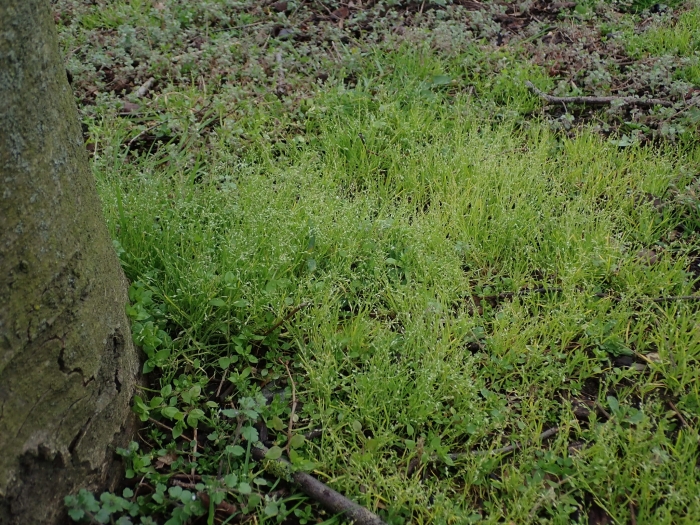Early Meadow-Grass
(Poa infirma)
Early Meadow-Grass (Poa infirma)
/
/

Daniel Cahen
CC BY 4.0
Image By:
Daniel Cahen
Recorded By:
Copyright:
CC BY 4.0
Copyright Notice:
Photo by: Daniel Cahen | License Type: CC BY 4.0 | License URL: http://creativecommons.org/licenses/by/4.0/ | Rights Holder: Daniel Cahen | Publisher: iNaturalist | Date Created: 2021-03-26T16:42:28-07:00 |














Estimated Native Range
Summary
Poa infirma, commonly known as early meadow-grass or weak bluegrass, is an annual grass native to Mediterranean regions and southwestern Europe, often found in disturbed sites, agricultural land, and urban areas. It is a small, densely tufted grass that typically grows up to 15 centimeters (6 inches) tall. The leaves of Poa infirma are thin, soft-haired, and yellow-green, contributing to its delicate texture. Its inflorescence is yellow and consists of branches bearing flattened spikelets with tufts of curly hairs, which are most apparent during its flowering season in the spring. While not particularly showy, the flowers are characteristic of the Poa genus.
Early meadow-grass is valued for its ability to grow in a variety of urban settings, including lawns, parks, and as a filler in disturbed or bare areas. It is relatively low maintenance, requiring medium amounts of water and thriving in full sun. It adapts to a range of soil drainage conditions, from slow to fast. However, due to its annual life cycle and modest height, it is not typically used for ornamental purposes. In some regions, it can be considered a weed, and its prolific seed production may lead to unwanted spread in gardens or cultivated areas.CC BY-SA 4.0
Early meadow-grass is valued for its ability to grow in a variety of urban settings, including lawns, parks, and as a filler in disturbed or bare areas. It is relatively low maintenance, requiring medium amounts of water and thriving in full sun. It adapts to a range of soil drainage conditions, from slow to fast. However, due to its annual life cycle and modest height, it is not typically used for ornamental purposes. In some regions, it can be considered a weed, and its prolific seed production may lead to unwanted spread in gardens or cultivated areas.CC BY-SA 4.0
Plant Description
- Plant Type: Grass
- Height: 0.5-0.5 feet
- Width: 1.5-3 feet
- Growth Rate: Rapid
- Flower Color: N/A
- Flowering Season: Spring
- Leaf Retention:
Growth Requirements
- Sun: Full Sun
- Water: Medium
- Drainage: Slow, Medium, Fast
Common Uses
Butterfly Garden, Low Maintenance
Natural Habitat
Mediterranean regions and southwestern Europe
Other Names
Common Names: Annual Bluegrass, Weak Bluegrass, European Weak Bluegrass, Diploid Annual Bluegrass, Weak Bluegrass, Pâturin Grêle, Vroeg Beemdgras
Scientific Names: , Poa infirma, Poa annua var. exilis, Poa annua subsp. exilis, Poa exilis, Ochlopoa infirma, Poa remotiflora, Poa annua var. plicata, Poa annua var. laxiflora, Catabrosa thomsonii
GBIF Accepted Name: Poa infirma Kunth